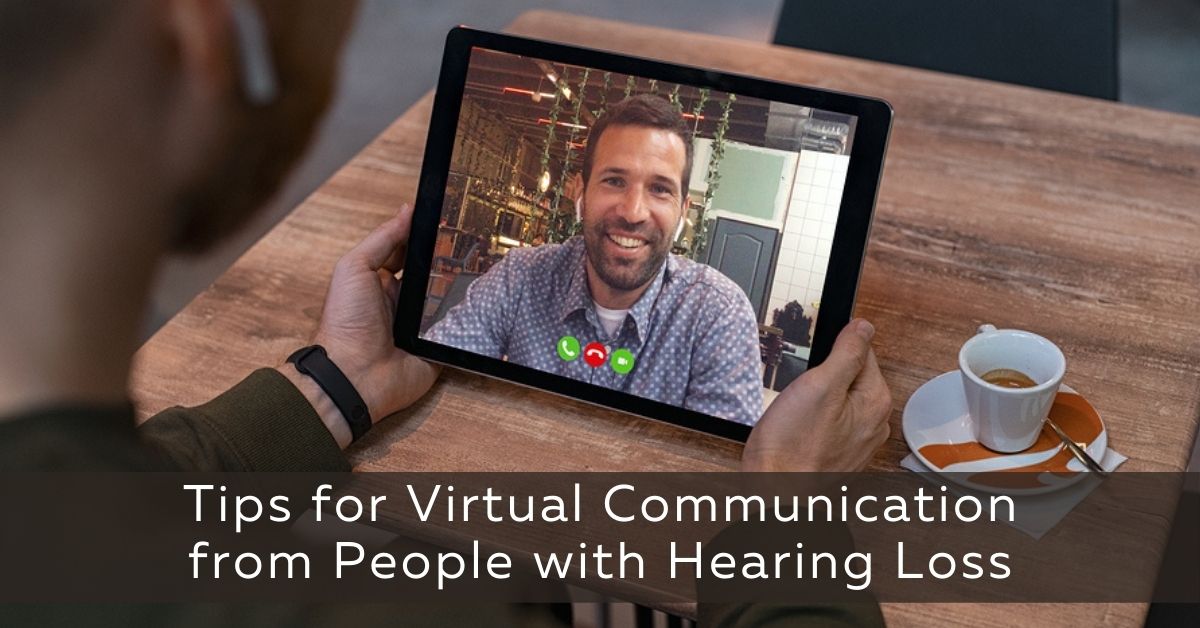
In recent months, virtual communication has become the primary way we spend time with others, attend events, participate in talks, and work. There are different platforms that facilitate virtual communication which many of us use daily at this point. Though it is designed to be convenient and easy, virtual communication can present specific challenges for people with hearing loss. It is incredibly important to ensure that everyone can participate in virtual conversations and spaces. There are several tips that you can practice to provide more accessible and effective communication virtually including the following:
Use Video
There are numerous reasons why you may want to avoid appearing on the screen! But it is important to remember that visual cues are an important way people with hearing loss navigate communication. Nonverbal communication can help provide context and being able to read mouths helps identify specific words. So, be sure to use video!
Check Lighting
Again, you want to make sure that you are visible on the screen so make sure that the space you are in is well lit. The most effective way to do this is to have light in front of you which illuminates your face – rather than backlighting which can make your face unclear.
Introductions
Starting meetings, talks, events etc. with introductions is really useful. This allows people to get familiar with who is speaking as well as provides the time to adjust any settings. People with hearing loss can use this time to make adjustments to the volume and get settled in.
Avoid Multitasking
It is important to eliminate or reduce any distractions as much as possible. People with hearing loss need to be able to focus on what is being communicated and having other things going on can make this challenging. The speaker should avoid eating, drinking, texting, leaving the screen etc. which allows the speaker to always be visible to the audience. Additionally, it ensures that the speaker’s mouth is not covered (helpful as reading mouths is a useful strategy).
Use Mute Button
Applying the mute button is a great way to reduce background noise. Background noise can make it challenging to hear, especially when multiple people are participating in the conversation. Noise from multiple screens can be overwhelming and can strain communication. So, if you are not speaking, use the mute button as much as possible. Additionally, eliminate as much of your background noise as you can – turn the television or music off, avoid running any household appliances, try to be in a separate room from others etc.
Share Screen
If you are reading documents or from slides, share your screen so that people can read along with you. This is a great way to be more accessible and ensure that people with hearing loss know what you are saying. Additionally, if you are referencing specific sources, try and share these materials by sharing your screen as much as possible.
Record Meeting
Recording the meeting is also really useful. This allows people to go back and review any parts of the conversation that they could have had difficulty with. Having access to recorded meetings also prevents people from missing important information. Additionally, it would be helpful to post any materials that were referenced (links to further readings, resources etc.).
In addition to these tips, remember to project your voice and speak clearly. Avoid interrupting others or having multiple people speak at once. These seemingly simple measures give people greater opportunity to hear and understand what is being said.
For people with hearing loss: two great ways to engage in virtual communication are:
- Sync hearing aids: depending on what type of hearing aids you have, there are devices that use Bluetooth technology to wirelessly connect to your other electronic devices (smartphone, television, laptop etc.). By syncing, you can stream the audio directly to your hearing aids which provides a sharper and clearer sound quality.
- Advocate for Hearing Needs: if you experience any barriers, remember to advocate for yourself. If you need someone to repeat something or use the mute button, be sure to share this. It is important that others know how they can best communicate effectively with you!
If you’ve been struggling with hearing loss, contact us today! We provide comprehensive hearing health services and we’re here to help.

Having a Good Time at Weddings With Hearing Loss
Matthew Favinger, M.S., F-AAA

Accessorizing and Customizing Your Hearing Aids
Matthew Favinger, M.S., F-AAA

